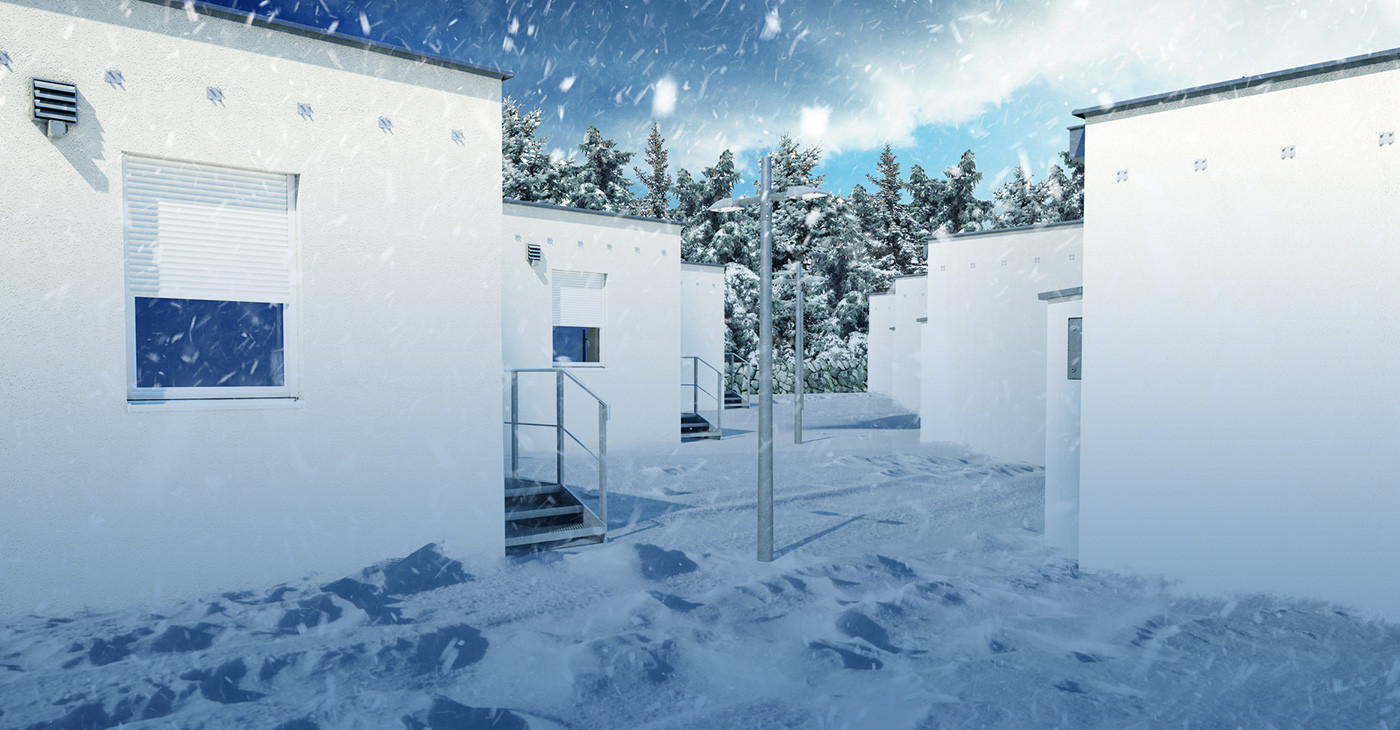The heating breaks down on the weekend and the technician is available only Monday. Which house type is the most comfortable to live in such situation?
Our research team from the VIVA park ventured out in February 2020 to turn off the main switch for the heating system for all 12 houses of the research park to simulate a heating break of two days. The initial interior temperature was 21°C, the outer temperature was 3°C.
The simulation immediately showed vast temperature differences among the tested houses. The lowest temperatures were measured in the uninsulated Viva house house 3 - 25 brick. The interior temperature was approx. 10°C and the wall surface temperature was approx. 8°C. After switching on the underfloor heating again, it took significantly longer than with the insulated houses to reach the initial temperature again.
In the insulated houses with solid walls, the interior temperatures were on average 17°C after two days. The wall surface temperatures were also on average 16°C.
The room and wall temperatures for the lightweight houses were approx. 14°C.
Although the outside temperatures were very mild this winter, the evaluation shows that in the event of a power failure of two days there would be a measurable cooling in the houses.
It makes a difference whether a building is insulated or not, or whether it was built in solid or lightweight construction. In insulated solid houses, it was significantly warmer two days after the heating was switched off than in the other research houses. The temperatures that were determined in the uninsulated solid houses or timber frame houses (insulated) were clearly outside the comfort zone.
This extreme example also shows that the combination of thermal insulation and storage mass best avoids rapid cooling of the building.
Compare all data from the VIVA research park.

